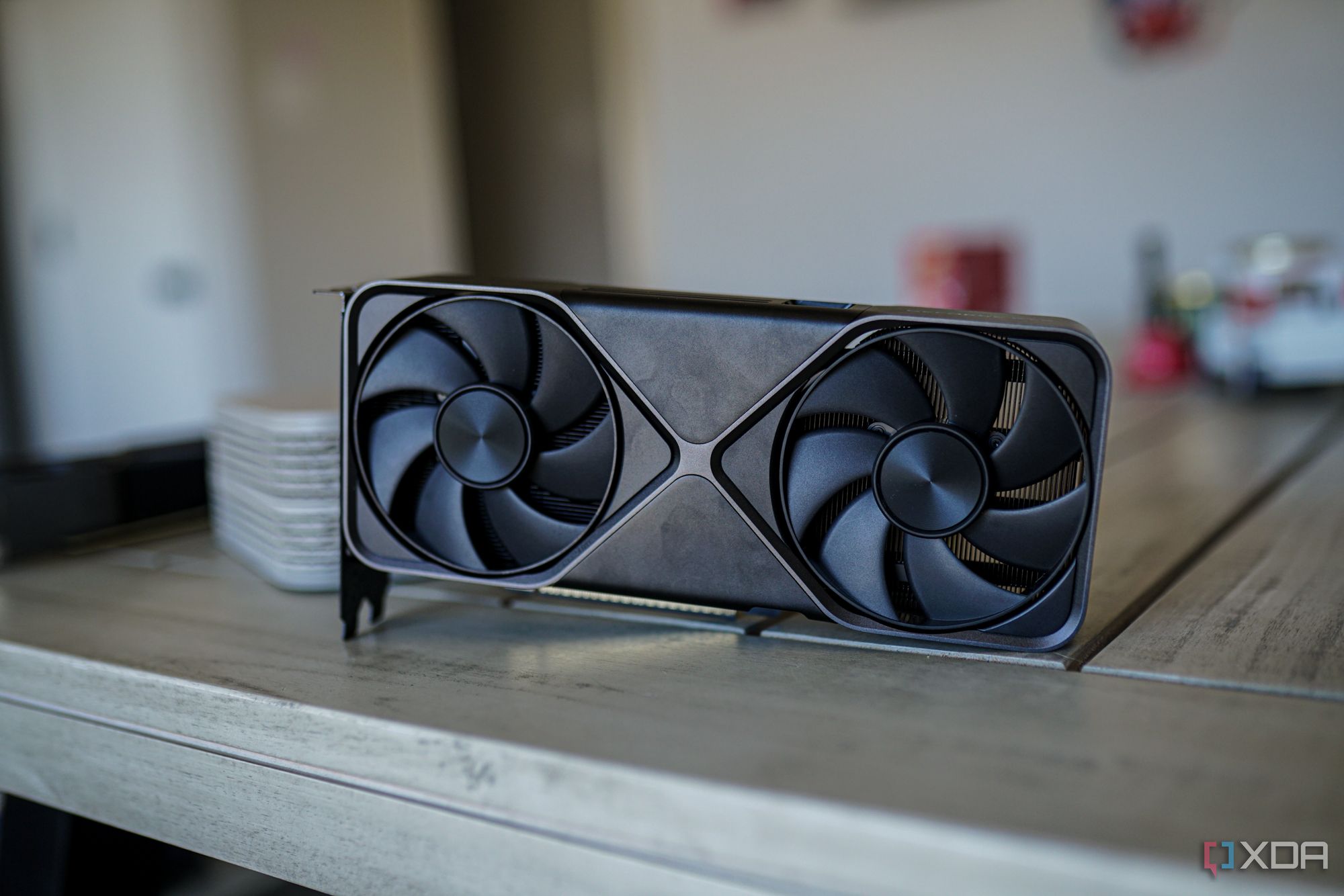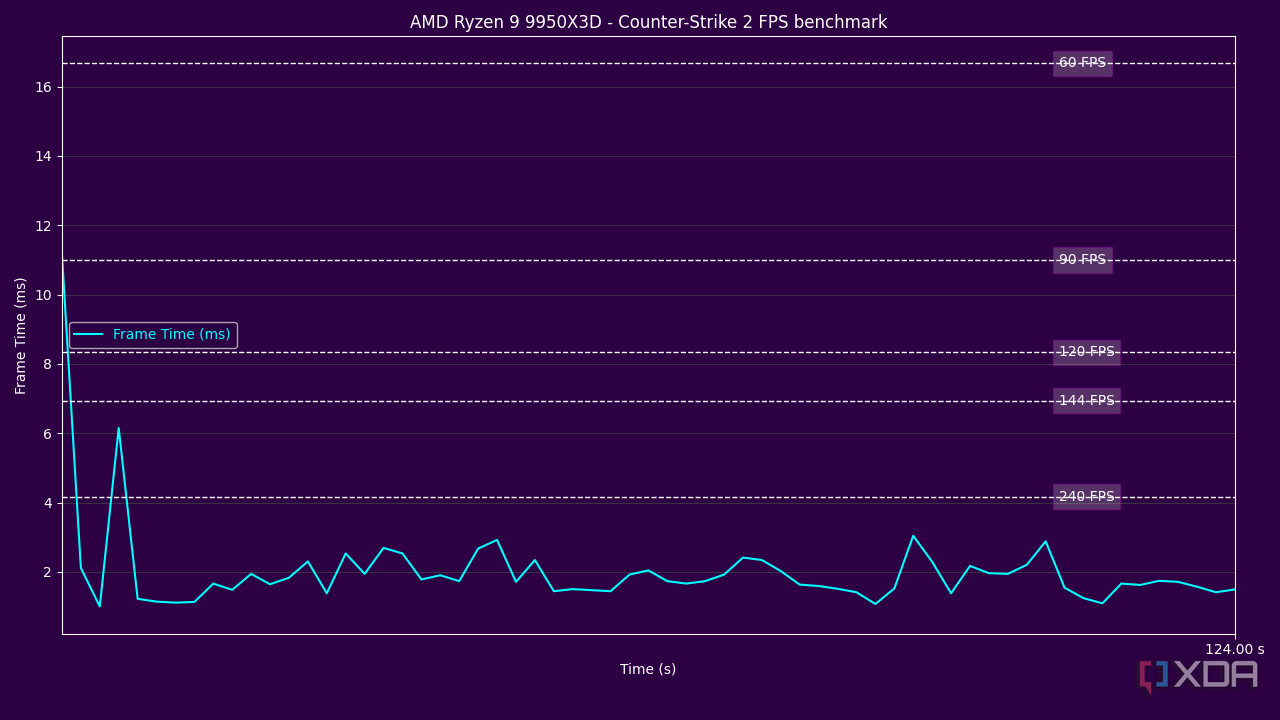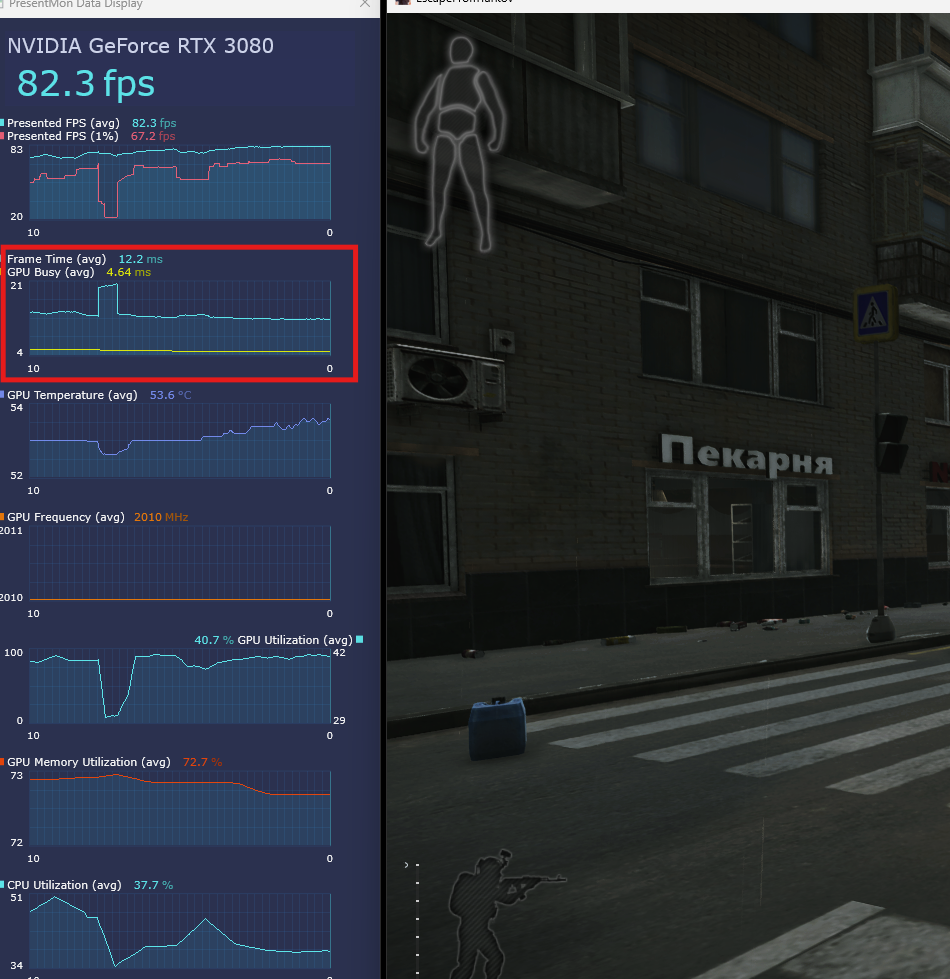Measuring PC performance can be tricky business. While you can get a halfway decent picture of performance by measuring average frames-per-second and calling it a day, you’re missing out on some key context that goes along with that number. Average FPS only gives you a small window into the overall performance of your computer in a specific title, and if you want more insight, be sure to measure these 4 metrics along with average frame rate.

Related
5 horrible PC building choices that still keep me up at night
I lose sleep thinking about these PC building blunders, but you don’t have to
4
0.1% and 1% lows in FPS
Gives you a better picture of performance in worst-case scenarios
While these numbers are still averages in frames-per-second, they’re a much better measure of overall experience. While normal average FPS numbers give you a full picture of your performance, 0.1% and 1% lows are the slowest moments in gameplay. It gives you a picture of how your performance looks when it’s at its worst.
When users complain of bad performance but have decent average FPS numbers, chances are their 1% lows are in the bin. It’s tough to get a gauge on these just by looking at the average FPS counter, so if you’re trying to get a good picture of your PC’s actual performance in a given scenario, 1% lows are great for that.

Related
Top 9 programs to stress test and benchmark your Windows PC
You should stress test your PC to make sure everything is running smoothly
3
Frame times
A good representation of how responsive a game “feels”
Frame rate is a measure of how many frames are being pushed to your display per second, but there’s another metric hidden within frame rate that matters quite a bit to how a game feels, and that is frame time.
Frame time is an indicator of how long it takes for your computer to create a frame from start to finish. This time itself is important if you’re looking for ultra-fast precision and response times in esports titles, but for more casual gaming, the time between frames is actually what matters. This frame time variance can result in an experience that looks okay in the data, but in practice can feel messy and unresponsive. Keep an eye on your frame times, as they can be a great indicator of underlying performance.

Related
5 reasons high FPS doesn’t guarantee a great gaming experience
A lot of other factors are at play
2
GPU Busy
The ultimate way to see what your PC’s bottleneck is
It’s not always easy to tell what part of your system is struggling, especially considering some games aren’t capable of putting a full load on a given component. GPU Busy can be a pretty foolproof way to see where your performance could be improved. It can be found and easily measured with the PresentMon framework, the most accessible version of which is Intel PresentMon.
GPU busy takes total frame time and isolates the GPU processing time only, allowing you to see just how “busy” your GPU is. If the difference between total frame time and GPU Busy is significant, you have a bottleneck on your hands. Low GPU busy and high frame times will usually indicate some kind of CPU bottleneck, while if the two are within a couple milliseconds of each other, your performance woes could be GPU related.

Related
5 reasons Intel PresentMon is the best tool for checking exactly what your gaming PC’s bottleneck is
Looking at CPU and GPU usage alone won’t tell you the whole story.
1
VRAM Usage
If you’re maxing out your VRAM buffer, you’re going to have a bad time
If it feels like your GPU should be able to get decent performance in a certain title, but doesn’t, it could be a VRAM issue. Maxing out your VRAM buffer can result in very low average FPS numbers that can be hard to diagnose otherwise. Your GPU usage may even drop below 100% in some cases, which could lead you to believe that you’re in a CPU-bound scenario.
If turning down the texture settings and perhaps tweaking resolution doesn’t lower VRAM usage, or even if it does and your performance issues still persist, it might not be a video memory issue. It’s a useful system metric to keep your eye on, especially in more modern titles. As GPUs continue to age, those with less than 10GB of VRAM will start to struggle tremendously. Even in the case of the 5060 Ti, the 8GB version of the card has been shown to struggle compared to its 16GB big brother, with differences in performance reaching up to 90%. The lesson: don’t overlook VRAM usage.

Related
5 reasons your GPU’s VRAM capacity matters more than ever
Remember the fears about low VRAM on GPUs? They’re all coming true
Performance is more than just one number
Understanding your PC’s performance comes down to taking stock of many different metrics, not just one. The average frame rate is great at a glance, but other numbers can tell you a deeper story. If you find that your computer is falling behind due to one specific component, like the GPU, for example, buying a pre-owned one can be a great way to save a buck while getting the upgrade you need.














